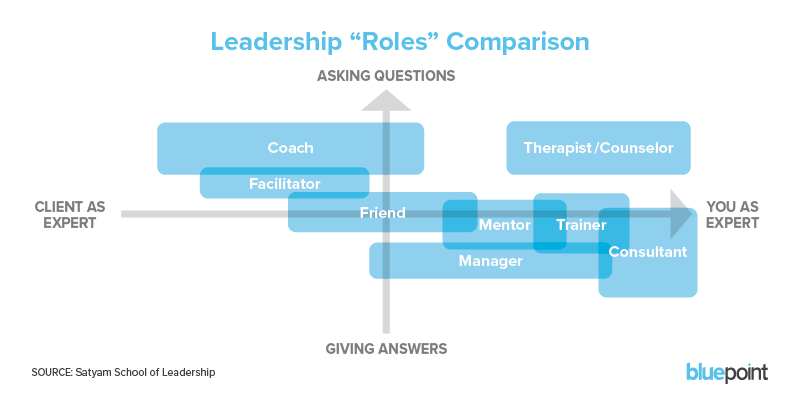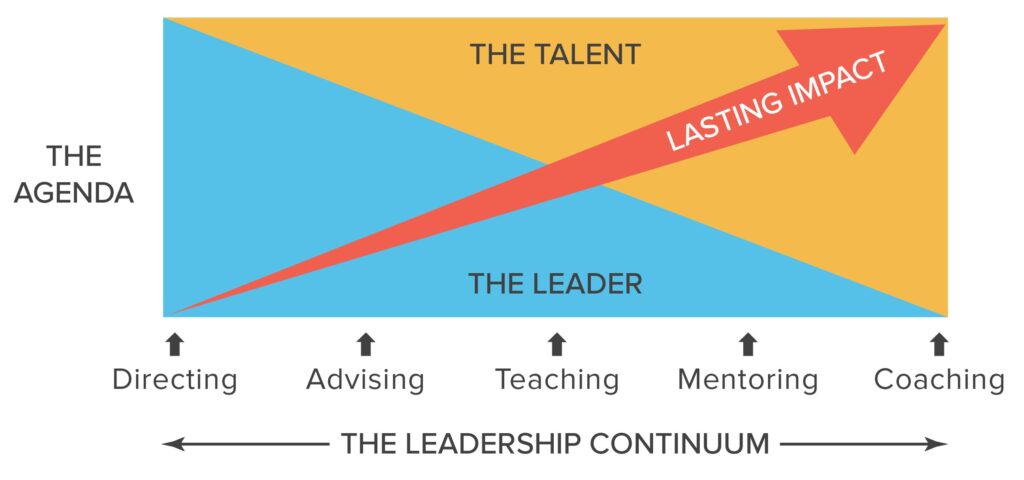How many times have you or one of your leaders been presented with the following scenario: A member of your team calls, clearly stressed, and after explaining the situation says something like:
“I am really struggling with this. What should I do?”
We’ve all been there, perhaps several times per day with several different team members. The situation presents a dilemma to the astute leader because they now must quickly decide the most appropriate response for that issue at that moment.
Do they simply direct the employee? Do they provide some counsel based on their own experience? Do they probe further to understand what the employee is considering?
Or do they coach the professional so they can find their own best action?
Deciding Which Role to Take
What separates exceptional leaders from others is that they immediately recognize the situation they are in and are decisive about the role they must play. They know that the type of response they provide will have a developmental impact on the employee, and they carefully consider what is most appropriate in that context. Let me explain…
The leadership landscape today is complex. Relationships are virtual, workforces are constantly in transition, teams and workgroups are more diverse, and speed is essential. These realities are forcing leaders to consider many approaches to their people, influenced by several factors, to achieve desired organizational outcomes.
The first step is recognizing that there are indeed multiple leadership roles that can be adopted. Without this appreciation, a leader may repeatedly default to a style or approach that they find most comfortable, even if it is less effective.
Consider the following chart, created by the Satyam School of Leadership.

The graphic does a wonderful job of plotting different leadership roles along two axes. One deals with “Asking Questions or Giving Answers,” and the other indicates whether you or the other individual is the “Expert” on the issue at hand. I believe this visual makes it clear as to why leaders are challenged with the common question I posed at the onset. Consciously or subconsciously, they know they must decide what role to assume.
The space limitations of this article prevent me from defining each role, but you can see how the visual is helpful. The “Manager” role will provide direct answers to the employee based on varying degrees of expertise, while the “Coach” will use effective questioning and other techniques to enable the professional to reach their own decision. The point here is not to paint one role as good or bad, but rather to recognize the various roles that can be adopted and to intentionally select the most effective in that moment.
Which Role is Most Effective?
As we contemplate what “most effective” means, there are various considerations. What is the criticality of the issue? Is there room for error? What are the capabilities and knowledge of the employee? How much time is available to act? Has this scenario been previously addressed? The list goes on and on.
In addition to helping the professional address the issue presented, the leader must also consider what is in the best interest of the employee’s development, and how they acquire additional knowledge, skill, and confidence. Here is another graphic that helps us put that perspective in place.

Created by Bluepoint Leadership, the diagram provides clear input on how the leader role enables the employee to grow and make meaningful developmental strides. The more we gravitate toward a “Coaching” role as compared to “Directing,” the greater the impact on the employee, in terms of both ownership and lasting impact.
Overall, the main goal is for the leader to access each role, understand them clearly, and decide which is best in the unique circumstance. Each role serves a positive purpose when applied at the right time.
Exceptional leaders continually assess which role is best for them to adopt to address the presenting issue and develop their people.
Until next time, good leading!
Neil Bryant is the Vice President of Coaching and Leadership at Bluepoint. Neil is committed to the development of leaders and supporting all professionals who seek to elevate their performance and enjoyment of work.

